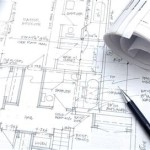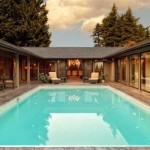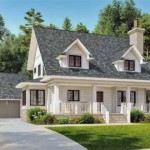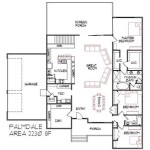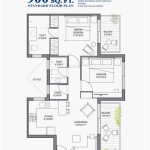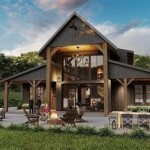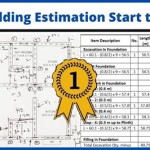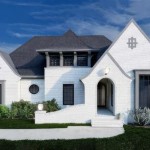Home Plans With Apartments Attached: Exploring Multifunctional Living Spaces
Home plans incorporating attached apartments, often referred to as accessory dwelling units (ADUs) or mother-in-law suites, are gaining significant traction in the residential construction and real estate sectors. These designs offer a unique blend of single-family living with the added benefit of a separate, self-contained living space. This approach caters to diverse needs, including multigenerational households, rental income opportunities, and flexible living arrangements.
The appeal of homes with attached apartments stems from their ability to address a variety of contemporary living challenges. The increasing cost of housing, coupled with the desire for closer family connections, has fueled the demand for housing solutions that can accommodate multiple generations under one roof. Simultaneously, the potential to generate rental income from an attached apartment provides homeowners with a valuable financial asset, offsetting mortgage costs and contributing to long-term financial stability.
This article will delve into the key considerations for home plans with attached apartments, exploring the design elements, functional benefits, regulatory aspects, and potential drawbacks associated with these multifaceted living spaces. Understanding these factors is crucial for homeowners considering this type of construction, as it ensures the resulting property aligns with their specific needs and complies with local building codes and zoning regulations.
Design Considerations for Attached Apartments
The design phase is paramount in creating a successful home plan with an attached apartment. Careful consideration must be given to several factors to ensure the integrated space functions optimally for all occupants. These considerations encompass layout, privacy, accessibility, and adherence to local building codes.
Layout is a critical aspect of the design. The apartment should have a distinct entrance and living space, separate from the main house, to maintain privacy for both occupants. Interior layouts generally include a kitchen, bathroom, living area, and bedroom. The size and configuration of these spaces will vary depending on the intended use and available space. It’s crucial to consider the flow between these areas to maximize functionality and comfort. Considerations such as natural light and ventilation are vital for ensuring a pleasant living environment within the apartment.
Privacy is another key design element. Proper soundproofing between the main house and the apartment is essential. This can be achieved through insulation, strategically placed walls, and the use of sound-dampening materials. The placement of windows and doors should also be carefully considered to minimize visual intrusion and maximize privacy for both households. Landscaping can be used to create natural barriers and enhance privacy around the apartment's entrance and windows.
Accessibility is a significant concern, especially if the intended occupants are elderly or have mobility limitations. Universal design principles should be incorporated to ensure the apartment is easily navigable for individuals of all abilities. This includes features such as wider doorways, ramps or level entrances, accessible bathrooms with grab bars, and easy-to-reach switches and outlets. Considering these accessibility features from the outset can make the apartment more versatile and accommodating for a wider range of occupants.
Building codes and zoning regulations are crucial considerations during the design process. Local authorities often have specific requirements for ADUs, including size restrictions, setback requirements, parking provisions, and fire safety regulations. Failing to comply with these regulations can result in costly delays, fines, or even the inability to occupy the apartment. Before finalizing any design plans, it is imperative to consult with local building officials and obtain the necessary permits to ensure compliance with all applicable regulations.
Functional Benefits of Attached Apartments
Homes with attached apartments offer a multitude of functional benefits, catering to diverse needs and lifestyles. These benefits extend beyond simple housing provision, encompassing financial advantages, flexible living arrangements, and enhanced family support.
Generating rental income is a primary benefit for many homeowners. The attached apartment can be rented out to tenants, providing a consistent stream of income that can help offset mortgage payments, property taxes, and other housing expenses. The rental income can also be used to fund home improvements, pay off debt, or save for retirement. The attractiveness of the rental unit will be determined by factors such as its location, size, amenities, and overall condition. Proper management of the rental property, including tenant screening and maintenance, is essential for maximizing rental income and minimizing potential issues.
Multigenerational living is another significant advantage. Attached apartments provide a comfortable and private living space for aging parents, adult children, or other family members. This arrangement allows families to stay connected and provide support to one another while maintaining a degree of independence. Caring for elderly parents in an attached apartment can alleviate the burden of long-term care facilities and promote a higher quality of life for both the parents and the caregivers. Similarly, adult children can benefit from the support of their parents while gaining financial independence and transitioning into adulthood.
Flexibility in living arrangements is also a key benefit. The attached apartment can be used in various ways depending on the homeowner's needs. It can serve as a guest suite for visiting friends and family, a home office, a studio for creative pursuits, or even a short-term rental property through platforms like Airbnb. This flexibility allows homeowners to adapt the use of the apartment to changing circumstances and maximize its potential value. For instance, an empty nester could downsize into the attached apartment while renting out the main house, providing both income and a smaller living space.
Personal caregiving is facilitated by an attached apartment. Having loved ones nearby makes it easier to provide assistance with daily tasks, medical appointments, and other needs. This proximity can be especially beneficial for individuals with disabilities or chronic illnesses who require ongoing support. The ability to provide care within the home environment can significantly improve the quality of life for both the caregiver and the care recipient. The enhanced peace of mind that comes with knowing loved ones are close by is a significant benefit for many families.
Potential Drawbacks and Considerations
While homes with attached apartments offer numerous advantages, it is crucial to acknowledge potential drawbacks and considerations before proceeding with construction or purchase. These include cost factors, potential privacy concerns, and the impact on property value.
Construction costs can be a significant factor. Building an attached apartment involves expenses related to materials, labor, permits, and utility connections. These costs can vary widely depending on the size and complexity of the apartment, as well as local construction costs. It is essential to obtain accurate cost estimates from qualified contractors before committing to the project. Unexpected costs can arise during construction, so it is prudent to budget for contingencies. Factors such as the existing structure of the home and the need for extensive renovations can also impact the overall cost.
Privacy concerns can arise if the design does not adequately address the needs of both occupants. Sharing a property with another household requires a degree of compromise and understanding. It is crucial to establish clear boundaries and expectations regarding noise levels, use of shared spaces, and other potential conflicts. Open communication and mutual respect are essential for maintaining a harmonious living environment. Addressing privacy concerns during the design phase, through soundproofing and separate entrances, can help minimize potential issues.
Impact on property value is a complex consideration. While an attached apartment can potentially increase property value, the extent of the increase depends on various factors, including the local real estate market, the quality of the construction, and the attractiveness of the apartment to potential buyers. In some areas, ADUs are highly sought after, while in others, they may not be as appealing. It is advisable to consult with a real estate appraiser to assess the potential impact on property value before investing in an ADU. Factors such as the size of the lot, the availability of parking, and the overall neighborhood characteristics can also influence the perceived value of the property.
Zoning and regulatory hurdles can be formidable. Local zoning regulations may restrict the construction of ADUs or impose specific requirements related to size, setbacks, and parking. Obtaining the necessary permits can be a time-consuming and complex process. It is crucial to thoroughly research local regulations and work with experienced professionals to navigate the permitting process. Failure to comply with zoning regulations can result in costly fines, legal action, and the inability to legally rent out the apartment. Some jurisdictions may have restrictions on who can occupy the ADU, such as requiring it to be occupied by a family member.

Multi Generational Ranch Home Plan With 1 Bed Apartment Attached 70812mk Architectural Designs House Plans

House Plans With In Law Suites Houseplans Blog Com

Pin On Dream Home

Multi Unit House Plan 126 1149 2 Bedrm 1872 Sq Ft Per Home Duplex Floor Plans

House Plans With In Law Suites Houseplans Blog Com

House Plans With In Law Suites Attached Guest Houses The Designers

Sullivan Home Plans June 2010 House One Story Best Dream

Homes With Mother In Law Suites

Apartment Floor Plans Shady Lane

Floor Plans With Mother In Law Suites Apartments

